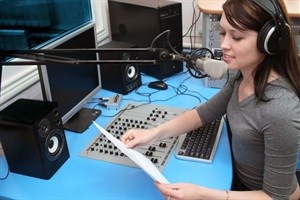Radio Pulpit 657AM, which began its trial of Digital Radio Mondiale (DRM30) medium wave (digital radio) in 2014, has released its results on broadcast quality.

© Andrey Tsidvintsvev via
123RFThe station made history by leading the South African radio broadcasting industry into the digital era with the first live digital medium wave broadcast. It transmitted the DRM30 trial broadcast from Pretoria during the period September 2014 up to October 2015, with support from Broadcom International and Sentech. DRM30 measurements were conducted successfully on 1440 kHz, using a 10kW DRM30 transmitter with the purpose of presenting test results to ICASA.
Antenna design critical
Two low profile antennas were used in the trial and both were capable of providing good signal coverage. Performance differences between the antennas highlighted the importance of the AM antenna, as part of the DRM station design.
Field strength measurement indicated that the propagated ground-wave does not radiate equally in all horizontal directions due to ground conductivity, nature of the topographical terrain, man-made noise, etc. The DRM30 coverage performance is not only a factor of received signal strength, but also of the signal to noise ratio in the reception area.
Modulation configuration selection had a direct impact on signal coverage area and data throughput. The 16QAM modulation configuration setting provided a more robust signal resulting in a larger signal coverage area compared to the 64QAM modulated signal, which provided a higher data rate and a smaller signal coverage area.
The DRM30 signal performed better than the analogue AM signal, with regard to coverage area for the same transmitter power. This means that the medium wave characteristics of DRM30 provide transmissions that can reach people in remote places where no other means of radio broadcasting could do before. With DRM30, people in difficult-to-reach areas will in future be able to listen to clear digital radio.
Energy savings
DRM30 demonstrated a substantial reduction in energy consumption compared to an analogue (AM) broadcast to cover the same area. The robust signal is ‘green’ and energy efficient and provides up to 50% savings in energy.
DRM30 demonstrated improved spectrum usage. In the study, DRM30 was capable of transmitting two good audio services on the same AM frequency and bandwidth, providing a wider choice for listeners, which will make multilingual programmes possible.
Added to the audio service text messages, a Journaline service was also transmitted, which was seen on the receiver end; demonstrating the added value offered by DRM30 in addition to audio being broadcasted only.
The DRM Consortium chairperson, Ruxandra Obreja, stated, “National networks, regional stations and smaller commercial and community stations all would be able to broadcast their radio programme with enhanced content and excellent sound quality. The DRM global standard can be used in all radio frequency bands and is ideal for the large countries of Southern Africa.”
Listeners can look forward to excellent audio quality (CD quality) with stereo and 5.1 surround sound. Other enhanced DRM30 features include:
- Automatic tuning by station name, no longer by frequency
- Emergency warning and alert system, warning listeners about possible disasters
- Multimedia applications and text messages (visible on the receiver screen)
- Electronic Program Guide (EPG) providing information about what is on – now and next. Listeners will be able to search for programmes and schedule recordings
- An option to accompany programs with images and animation via the MOT Slideshow
- TPEG/TMC traffic information
For more information, go to www.drmsa.org.






































